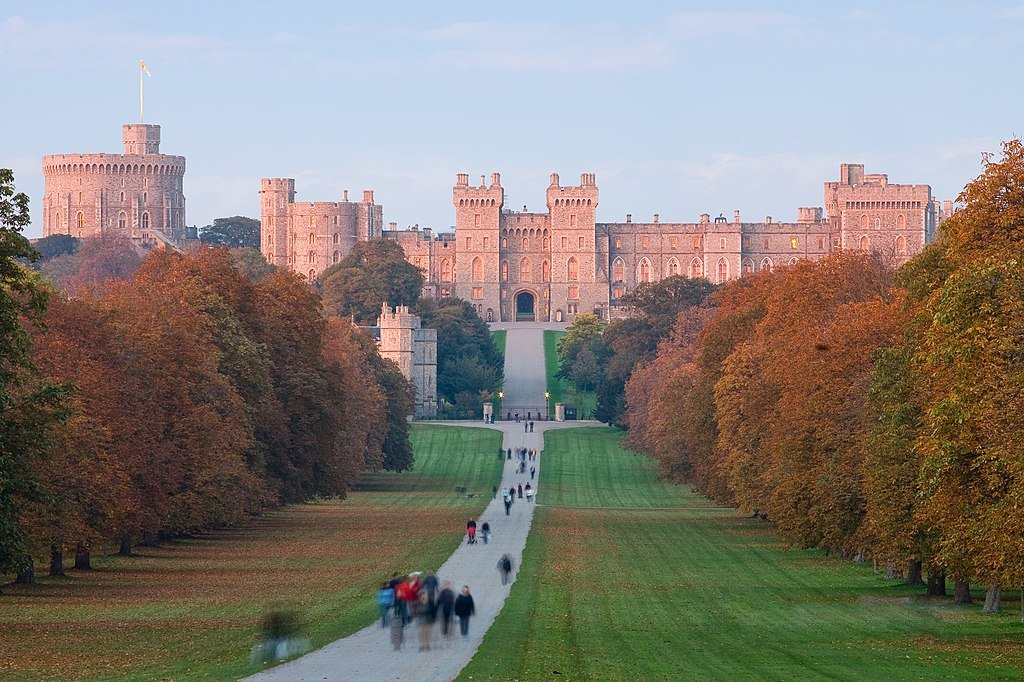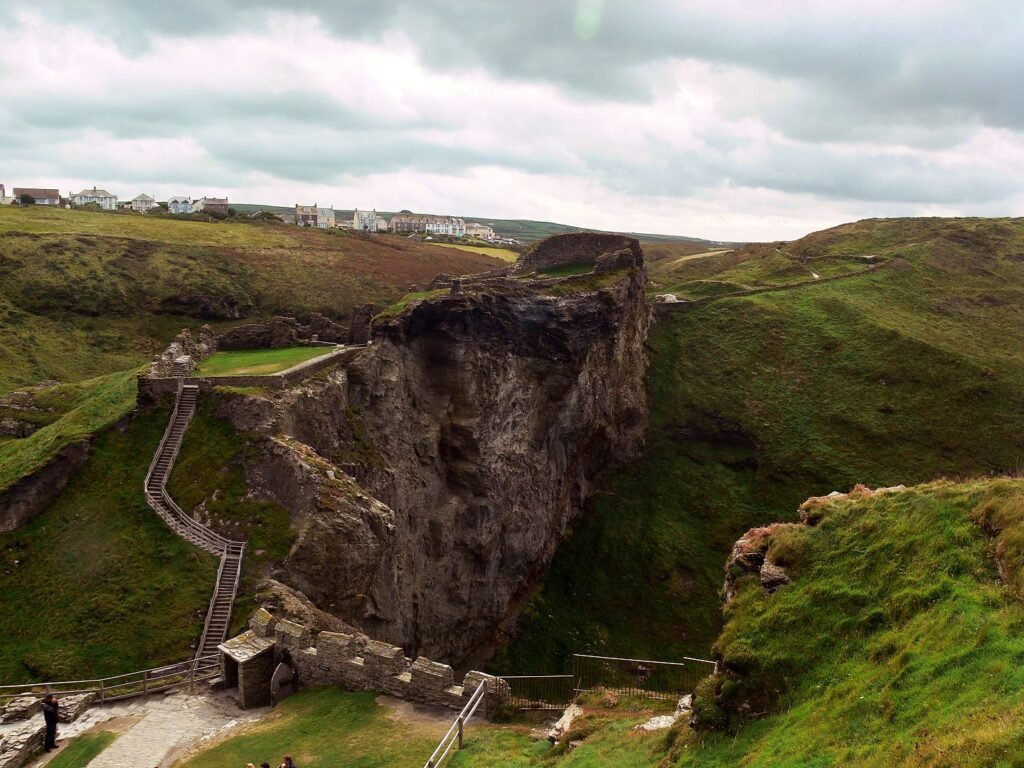
Durham Castle: If you’re dreaming of stepping back in time while soaking up the charm of the British countryside, Durham Castle should be right at the top of your UK bucket list. Perched dramatically on a hill overlooking the winding River Wear, this ancient fortress isn’t just a standalone stunner; it’s your gateway to exploring the broader tapestry of UK history, from medieval strongholds to romantic ruins scattered across England, Scotland, Wales, and Northern Ireland.
Whether you’re a family chasing kid-friendly adventures, a couple seeking a romantic escape, or a solo traveller hungry for introspection, Durham Castle offers something magical. Let’s dive in and uncover why this spot, and the UK’s castle scene at large, is perfect for your next holiday.
Picture this: you’re strolling through echoing halls where bishops once wielded power like kings, then venturing out to nearby trails or hopping on a train to other iconic sites. The UK’s castles aren’t just stones and stories; they’re living links to legends, battles, and everyday life through the ages. From the rugged coasts of Northumberland to the rolling hills of the Cotswolds, they’re a theme that ties together epic road trips and cosy weekends. Ready to plan? Grab a cuppa, and let’s get started.
A Brief Background: From the Norman Conquest to Modern Marvel
Durham Castle’s story kicks off in the turbulent aftermath of the Norman Conquest. Built starting in 1072 under William the Conqueror’s orders, it was designed as a motte-and-bailey fortress to keep the rebellious north in check. Supervised initially by the Earl of Northumberland, Waltheof, the castle quickly became the seat of the powerful prince-bishops of Durham, ecclesiastical lords who ruled with almost king-like authority, minting coins, raising armies, and defending against Scottish raids.
Over the centuries, it evolved from a stark defensive outpost into a lavish palace. Bishops like Hugh de Puiset in the 12th century added grand halls, while Thomas Hatfield in the 14th century expanded the keep. By the 19th century, as the bishops’ powers waned, the castle was donated to the newly founded Durham University in 1837, becoming University College. Today, it’s home to students during term time, blending ancient grandeur with youthful energy.
This mirrors the UK’s wider castle narrative: many started as Norman imports post-1066, like Windsor or the Tower of London, evolving into symbols of power, then tourist hotspots. Think of Edinburgh Castle guarding Scotland’s capital or Caernarfon in Wales, a reminder of Edward I’s iron grip. Durham’s tale invites you to trace these threads across the nation, perhaps starting here and venturing to Hadrian’s Wall, just a short drive away, for a full immersion in Roman and medieval borders.
Current Facts, Figures, and Trends: Durham Castle in the Spotlight
Fast-forward to today, and Durham Castle is thriving as part of a UNESCO World Heritage Site shared with the adjacent Durham Cathedral since 1986. It’s one of over 4,000 castles in the UK, but stands out for its continuous occupation for over 1,000 years without a break! Owned by Durham University, it houses around 100 students and welcomes visitors via guided tours only, ensuring its preservation amid daily life.
Visitor numbers are on the upswing: pre-pandemic, the broader Durham World Heritage Site drew about 720,000 people annually, with the castle seeing tens of thousands on tours. Post-2020 recovery has been strong, aligning with a UK-wide surge in castle tourism; English Heritage sites alone reported record family visits in 2023, up 50% over the decade. Popularity trends show a boom in “staycation” seekers, with castles like Durham benefiting from social media buzz (think #CastleLife on Instagram) and TV influences like Bridgerton fueling romantic getaways.
Regionally, North East England lags behind London’s Tower (over 3 million visitors yearly) but shines for authenticity; fewer crowds mean more intimate experiences. Categories vary: defensive like Bamburgh Castle nearby, palatial like Alnwick (of Harry Potter fame), or ruined like Bolton in Yorkshire. Trends lean toward experiential visits, ghost tours, reenactments and eco-friendly travel, with many sites promoting sustainable practices. Facts-wise, the UK boasts the world’s densest castle concentration, with Wales alone having over 600.
Durham’s stats: It’s Grade I listed, covers 8.79 hectares, and its Norman Chapel is the city’s oldest building.
For broader UK insights: Scotland’s castles trend mystical (Eilean Donan), Wales’ rugged (Conwy), and England’s a mix, with rising interest in lesser-known spots amid overtourism concerns at giants like Windsor.
Major Destinations and Attractions: Beyond the Battlements
Durham Castle is your launchpad for a constellation of UK wonders. Start right here: the castle’s highlights include the Great Hall (a 14th-century dining marvel), the Norman Chapel with its ancient carvings, and the Black Staircase, a 17th-century architectural gem. Across Palace Green lies Durham Cathedral, a Romanesque masterpiece housing St. Cuthbert’s relics; don’t miss the cloisters, filmed as Hogwarts in Harry Potter.
Venture nearby: Beamish Museum, a 20-minute drive, recreates early 20th-century life with trams and pit villages, perfect for families. Head to the coast for Bamburgh Castle, dramatically perched on dunes, or Alnwick Castle with its poison garden and broomstick lessons. For trails, the Durham Heritage Coast offers clifftop walks spotting seabirds.
Broadening out, theme your trip around UK castles: In Scotland, Stirling Castle overlooks battlefields; in Wales, Cardiff Castle mixes Roman roots with Victorian flair. Museums like the British Museum in London or York’s Jorvik Viking Centre complement the vibe. Coasts? Cornwall’s Tintagel links to King Arthur legends. Cities? Edinburgh’s castle crowns the Royal Mile. For nature lovers, hike the Northumberland National Park trails near ruins like Dunstanburgh.
These spots appeal universally: families love interactive exhibits at Warwick Castle, couples adore sunset views from Conwy, and solos find peace in remote Orkney sites like Skara Brae.
Travel Tips and Practical Advice: Making Your Visit Seamless
Planning a trip to Durham Castle? Let’s make it hassle-free. First, book guided tours in advance; they run daily (typically 1:15 pm, 2:15 pm, 3:15 pm, 4:15 pm), lasting 45-50 minutes, and cost around £5-£10 per adult (kids often free or discounted). Tours meet at Palace Green Library; no self-guided access due to student residents. Opening times vary by season; check the university website, as closures happen for events.
Best time? Spring (April-May) for blooming gardens or autumn (September-October) for fewer crowds and golden foliage. Avoid peak summer if you hate queues.
Accessibility: The historic layout means steep stairs and cobbles; wheelchair access is limited to ground floors, but audio guides and virtual tours help. Family-friendliness shines with engaging guides who spin yarns for kids; prams are tricky, so carriers are better.
Getting here: Fly into Newcastle Airport (45 minutes away) or train to Durham Station (London’s just 3 hours via high-speed rail). Parking is scarce, use city-centre lots and walk. For UK-wide travel, trains are efficient; consider a BritRail Pass for flexibility.
Practicalities: Dress for changeable weather, layers and sturdy shoes. Book online for attractions; combo tickets with the cathedral save money. When to go UK-wide? Summer for festivals, winter for cosy fireside stays.
Budget tip: National Trust or English Heritage memberships unlock free entry to hundreds of sites.
For all travellers: Families, pack picnics for Palace Green; couples, opt for evening tours for romance; solos, join group walks for camaraderie.
Suggested Itineraries and Themed Travel Routes: Castle-Hopping Adventures
Ready to roam? Here’s a 3-day Durham-centred itinerary, expandable to UK themes.
Day 1: Durham Deep Dive – Arrive, tour the castle and cathedral. Stroll the riverbanks, visit the Oriental Museum for global artefacts. Evening: riverside walk.
Day 2: North East Explorer – Drive to Beamish for living history, then Bamburgh for beachy castle vibes. Return via Holy Island (Lindisfarne), tide-dependent.
Day 3: Broader Horizons – Train to York for the Minster and walls, echoing Durham’s ecclesiastical roots.
Themed routes: “Prince-Bishops’ Path” traces Durham’s legacy to Auckland Castle (10 miles south). For a week-long UK castle circuit: Start in Durham, head to Edinburgh Castle (train, 2 hours), then Stirling, over to Wales’ Conwy, south to Warwick, ending at Windsor. Drive the North East’s “Castle Coast” from Berwick to Seaham, scenic, with stops at ruins.
Family itinerary: Add adventure parks near Raby Castle. Couples: Wine tastings at historic estates.
Solos: Hiking Hadrian’s Wall Path, linking Roman forts to medieval castles.
Recommendations: Where to Eat and Stay Nearby
Durham’s scene is delightfully diverse. Stay at the castle itself, book B&B rooms in term breaks for a princely experience (from £100/night). Nearby, Radisson Blu offers river views (£120+), or try boutique spots like The Town House for charm (£90). For UK flair, castle hotels abound: Thornbury in Gloucestershire or Ashby in Northamptonshire.
Eat: The Cellar Door serves modern British with castle vistas, try the local lamb (£20 mains).
For Asian fusion: The Rabbit Hole is trendy (£15-£25).
Families love: Flat White Kitchen’s brunches;
Couples: Isla’s tasting menus.
Broader UK: Sample fish and chips in Whitby or haggis in Scotland.
Seasonal Events and Special Experiences: Year-Round Magic
Durham lights up seasonally.
Summer: Kynren, an epic outdoor show nearby (June-September).
Autumn: Durham Fringe Festival (July) with theatre in historic spots.
Winter: Lumiere light festival (biennial, next 2025) transforms the castle.
Spring: Bishop Auckland Food Festival.
UK-wide: Edinburgh Festival Fringe (August), Warwick Castle’s jousting (summer), or ghost hunts at haunted spots like Chillingham.
Specials: Stay in a castle for Hogmanay in Scotland or join reenactments at English Heritage events.
There you have it, Durham Castle as your springboard to the UK’s enchanting world. Whether it’s your first UK jaunt or a return visit, these stones whisper stories that’ll linger long after you leave. Safe travels, and let’s chat in the comments about your favourite castle moments!


